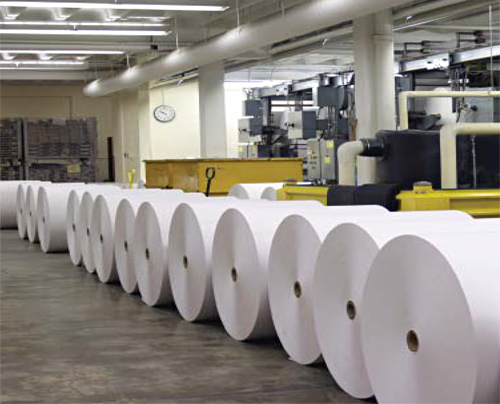
The non-profit organization, Two Sides Inc., is doing a great job on their website dispelling many of the myths and misconceptions that the paper industry is responsible for large-scale deforestation and adverse impacts on the environment.* Here’s a summary of some of the facts they’ve posted regarding the production, use and recycling of paper products.
Myth 1: Making Paper destroys forests.
The Fact: The North American paper industry promotes sustainable forestry and depends on sustainable forest growth to provide a reliable supply of wood fiber. Paper manufacturers do this by encouraging forest sustainability through the purchase and use of certified wood fiber and by promoting sustainable forest management policies and practices such as Forest Stewardship Council (FSC) Certification.
Myth 2: Making paper is bad for the environment.
The Fact: Paper is recyclable and it is made from a natural resource that is renewable. These features, combined with the North American paper industry’s advocacy of responsible forestry practices and certification, use of renewable, carbon-neutral bio-fuels and advances in efficient paper making technology, make paper one of the most sustainable products on earth.
Myth 3: Making paper consumes a lot of energy.
The Fact: The most recent data from the U.S. Energy Information Agency shows that the paper industry is the country’s third-largest industrial user of energy. However, nearly two-thirds of the energy used by North American pulp and paper mills is self-generated using renewable, carbon-neutral biomass. In fact, the North American paper and forest products industry produces and uses more renewable energy than all other industrial sectors combined.
Myth 4: Paper has a high carbon footprint.
The Fact: Carbon footprint is defined as the amount of carbon dioxide and other greenhouse gases that a person, organization, event or product causes to be released to the atmosphere, either directly or indirectly, during its life. Paper’s carbon footprint is smaller than might be expected: it’s made from a renewable resource that stores carbon, it’s manufactured using mostly renewable energy and it’s recyclable.
Myth 5: Print and paper is a wasteful product.
The Fact: In addition to the sustainable advantage of being made from a renewable resource, paper is the most recycled product in the world. The recovery rate for used paper has increased dramatically since 1990 when tracking paper recycling began. We’re not only recovering more, but we now know how to get the most environmental and economic benefits from using recycled paper in new products.
Myth 6: Electronic communication is more environmentally friendly than print and paper.
The Fact: Organizations that truly want to make responsible environmental choices should do so based on rigorous, factual and verifiable life cycle assessments of each alternative. Rather than asking which is better, paper or electronic communication, we should be working to figure out which combination of the two has the least impact on the environment while best meeting social and economic needs.
*Click here for complete citations and links to original sources.
At Still Creek Press, we’re committed to protecting the environment. Let us show you how you can reduce the environmental impact of your next print order by considering green printing. Speak with one of our sales representative for more information.
Find more like this: Featured, Green Printing




